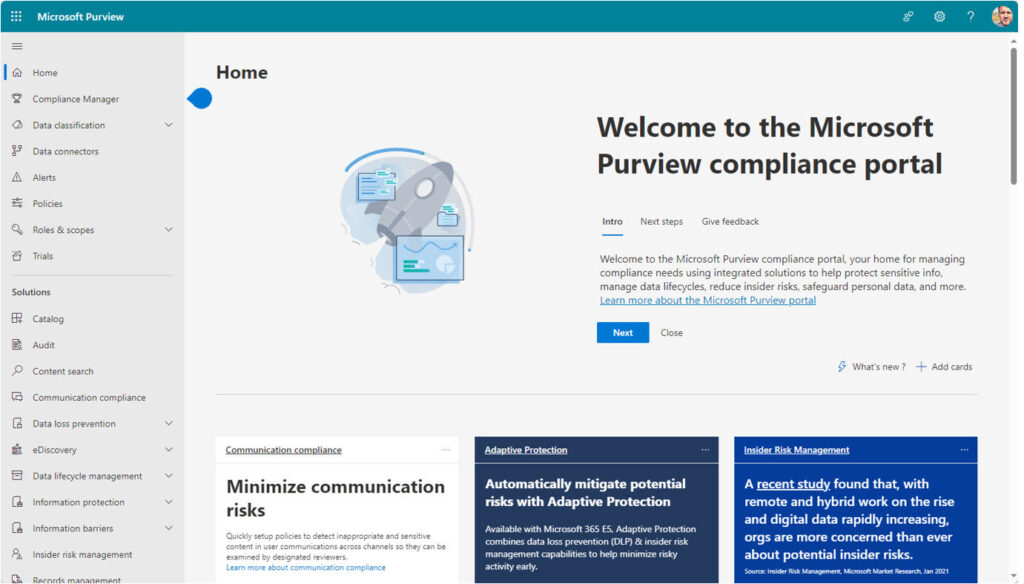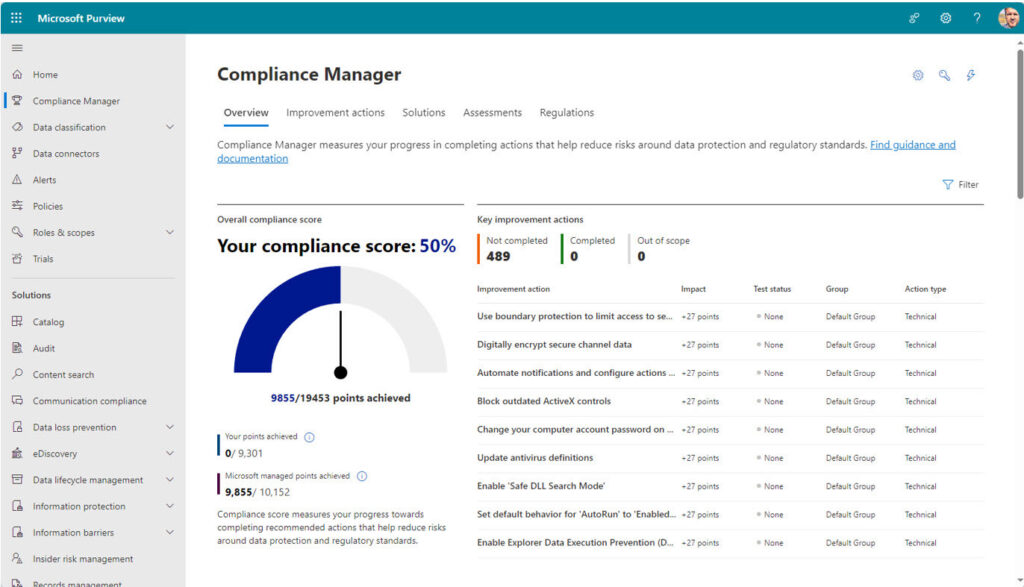Achieving Effective Microsoft 365 Governance
Part 1 of a 3-article series providing expert governance strategies for consultants and IT leaders.
Information governance is crucial for organizations to manage their information assets effectively throughout their lifespan. Information governance is the set of policies, procedures, and practices that organizations use to manage their information assets throughout their lifecycle. Implementing information governance can be a complex and challenging process, with many organizational challenges.
Organizations frequently encounter significant challenges when implementing information governance, such as a lack of stakeholder support. Successful information governance relies on endorsement from all levels of an organization. Without buy-in from key stakeholders, such as senior management and frontline staff, the implementation process can stall or veer off course.
The modern organization also finds itself managing increasingly complex data environments. Most organizations grapple with intricate data landscapes, involving various systems, applications, and formats. This complexity hinders tasks like data identification, classification, retention policy formulation, and alignment with legal and regulatory mandates.
One of the most common and difficult challenges – for both individuals and organizations – is simply resistance to change. Anything that disturbs the status quo, whether introducing a new collaboration tool or retooling a business process, will often be met with resistance. Information governance often entails process, procedure, and workflow changes. Such changes will likely be met with resistance from employees accustomed to existing practices or unaware of the changes’ significance. Overcoming this resistance demands effective communication, training, and stakeholder engagement.
Addressing these challenges demands strategic planning, stakeholder involvement, and clear communication to ensure a successful information governance implementation.
Automating much of the information governance process can help organizations improve compliance with regulations and policies related to data management and protection by making it easier to enforce policies consistently, identify non-compliance, standardize audit processes, protect data from breaches, and simplify reporting.
Potential Gaps in Microsoft 365
To address the specialized needs of organizations in managing and securing data, Microsoft offers Microsoft Purview, a comprehensive tool designed for effective information governance and compliance management. Purview extends the capabilities of Microsoft 365 by providing a unified data governance solution that enables organizations to understand, manage, and protect their data across various platforms and environments. With features like advanced data classification, sensitive information discovery, and robust compliance and risk management tools, Purview helps organizations tailor their governance strategies to meet unique operational demands and regulatory requirements.

Understand the capabilities within Microsoft Purview | Used with permission from Microsoft.
In some cases, Microsoft’s information governance solutions don’t fully match specific operational needs. This arises from unique demands beyond standard offerings, affecting data management and protection. Certain entities need more flexible data classification, accounting for sensitivity, criticality, and regulations, where Microsoft’s options fall short.
Here are some possible areas where organizations may identify missing features or capabilities in Microsoft’s information governance solutions:
- Flexibility in data classification: Microsoft’s information governance solutions may not provide the flexibility and granularity that some organizations require for data classification. Some organizations may want to classify data based on a combination of factors, such as its sensitivity, criticality, and legal or regulatory requirements, which may not be fully supported by Microsoft’s solutions.
- Advanced retention policy management: While Microsoft’s information governance solutions provide some basic retention policy management capabilities, some organizations may require more advanced features such as event-based retention, custom retention schedules, and legal hold management.
- Enhanced e-discovery capabilities: While Microsoft’s information governance solutions provide some e-discovery capabilities, some organizations may require more advanced features such as predictive coding, near-duplicate detection, and more robust search capabilities.
- Granular access controls: Microsoft’s information governance solutions may not provide the granular access controls that some organizations require for their data. For example, some organizations may require role-based access controls, data-level access controls, and multi-factor authentication to ensure that only authorized users have access to their data.
- Integration with third-party solutions: While Microsoft’s information governance solutions integrate with many of Microsoft’s other products, some organizations may require integration with third-party solutions for specialized needs, such as data classification, retention policy management, and e-discovery.
While Microsoft’s information governance solutions offer a range of capabilities for managing and protecting data, some organizations may require additional features or capabilities to fully meet their specific needs and requirements.
Microsoft Purview Compliance Manager, shown in Figure 2, is a tool within Microsoft Purview that aids organizations in managing their compliance requirements effectively. It offers a centralized dashboard for monitoring compliance progress, features pre-built assessment templates for various regulations, and provides a scoring system to evaluate compliance posture. Additionally, it includes actionable recommendations and tools for documentation and reporting to simplify the compliance process and reduce the risk of non-compliance.

Conduct regular audits of your overall compliance score in Purview. | Used with permission from Microsoft
Understanding the Benefits of Automating Governance
Automation can help organizations improve compliance with regulations and policies related to data management and protection by making it easier to enforce policies consistently, identify non-compliance, automate audit processes, protect data from breaches, and simplify reporting.
There are several areas within modern organizations where information governance automation can provide significant benefits, including:
- Data classification and tagging: One of the key challenges in information governance is identifying and classifying data according to its sensitivity and importance. Automation can help by using machine learning algorithms to analyze data and automatically classify it based on predefined rules and policies.
- Records retention and disposition: Organizations are required to retain certain types of data for a specific period of time, while other data should be disposed of after a certain period. Automation can help by applying retention policies to data and automatically deleting or archiving data when retention rules dictate that the date should be disposed of.
- Compliance monitoring and reporting: Many organizations are subject to legal and regulatory requirements related to data privacy, security, and management. Automation can help by monitoring data usage, access, and file/data sharing to ensure compliance with these requirements and generating reports to demonstrate compliance.
- Information security: Information governance is closely linked to information security, and automation can help organizations to identify and respond to security threats more quickly and effectively. For example, automation can be used to monitor network traffic and detect anomalies that may indicate a security breach.
- E-discovery: In the event of a legal dispute, organizations may be required to produce relevant documents and data as part of the discovery process. Automation can help by searching and retrieving data more quickly and accurately, reducing the time and cost associated with e-discovery.
Automating your Microsoft 365 information governance processes offers increased efficiency, accuracy, and compliance. However, a pivotal aspect of successful automation lies in meticulous planning and development of your overarching information governance strategy. This ensures a comprehensive and cohesive approach, enabling you to harness the full potential of automation while aligning with your organization’s broader objectives.
From Challenges to Strategic Implementation
My goal in this series is to help readers navigate through the critical aspects of establishing a robust information governance framework. We explored the challenges organizations face, such as securing stakeholder support, managing complex data environments, and overcoming resistance to change. We also outlined the capabilities and potential gaps within Microsoft 365’s information governance solutions, including Microsoft Purview’s role in enhancing compliance and data protection.
The journey towards effective governance doesn’t end here. In our next article, we will shift our focus from identifying and addressing these challenges to crafting a comprehensive Microsoft 365 governance strategy. We’ll provide actionable insights and steps to develop a governance framework that not only meets regulatory demands but also drives business value. Stay tuned as we explore how to align your governance efforts with overarching business goals and regulatory requirements, ensuring a seamless and effective governance implementation.





3 Responses
[…] series providing expert Microsoft 365 governance strategies for consultants and IT leaders. Click this link to read Part […]
[…] Achieving Effective Microsoft 365 Governance [blog] […]
[…] Achieving Effective Microsoft 365 Governance […]